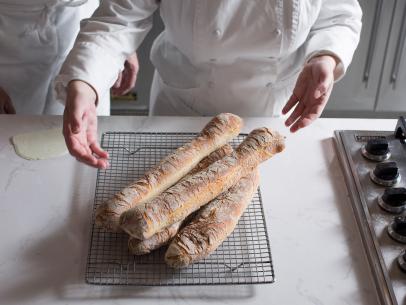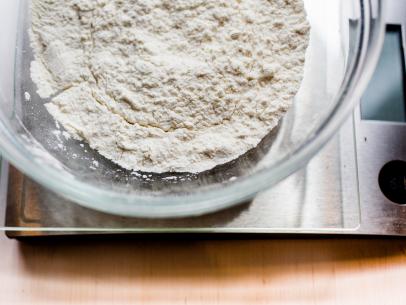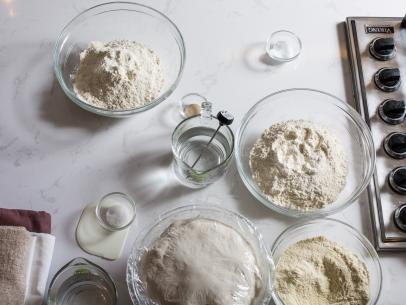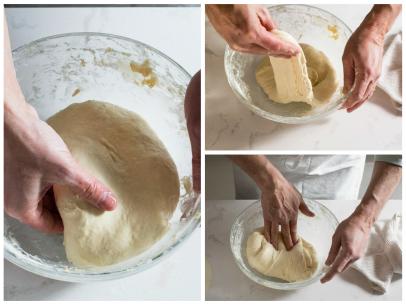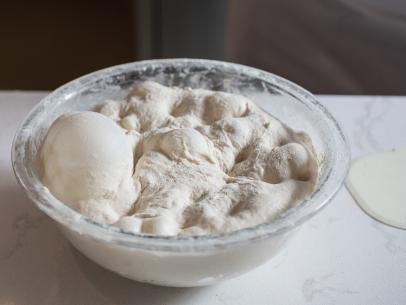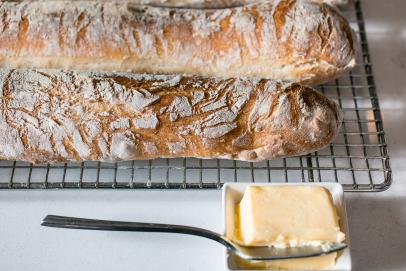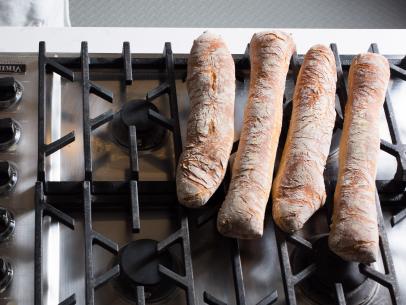Home >> Snacks Recipes >> Nigerian Chin Chin
How to Make Nigerian Chin Chin
 Chin Chin is a crunchy deep-fried snack that originated from Nigeria. It is an ideal light refreshment for you and your guests. The Nigerian Chin Chin can last for weeks if stored in an airtight container.
Chin Chin is a crunchy deep-fried snack that originated from Nigeria. It is an ideal light refreshment for you and your guests. The Nigerian Chin Chin can last for weeks if stored in an airtight container.How to Make Nigerian Chin Chin [Video]
With no baking involved in this recipe, Chin Chin is one of the easiest Nigerian snacks to make.
To make some Nigerian Chin Chin, you will need the following ingredients.
Ingredients for Soft Chin Chin
- 8 cups (1kg) plain flour (all purpose flour)
- ¾ cup (150ml) evaporated milk (Peak Milk) / 150g powdered milk
- 1¼ cups (275g) granulated sugar
- 250g margarine
- 2 medium nutmegs | 2 teaspoons ground nutmeg
- Tasteless and odourless vegetable oil (for frying)
If you want the Chin Chin really crunchy, use the following quantities of ingredients
- 1kg plain flour (all purpose flour)
- 75ml evaporated milk (Peak Milk) / 75g powdered milk
- 200g granulated sugar
- 125g margarine
- 2 medium nutmegs | 2 teaspoons ground nutmeg
- Vegetable Oil (tasteless and odourless)
Directions
- Mix the milk and sugar in a bowl and leave to soak.
Note: If you are using powdered milk, mix the milk and sugar. Then add 150ml of water for soft chin chin (75ml of water for crunchy chin chin), mix and leave to soak.
One way to get the sugar to dissolve fast is to grind it in a dry mill before mixing it with other ingredients. - In a separate bowl, mix the ground nutmeg and flour, then rub the margarine into the flour till it has mixed well with the flour, leaving no lumps.
- Add the sugar/milk mixture to the margarine/flour mixture and mix by hand till a smooth dough is achieved.
- Place the dough on a flat surface and start kneading gently with a dough roller.
- When the dough is flat, cut into desired sizes.
- Deep-fry in hot vegetable oil.
- While frying, continuously stir the chin chin till you get a golden brown color.
- Scoop the fried pieces onto a flat tray to dry and cool down quickly.
- When the chin chin had cooled down completely, store in a dry, airtight container.
Serve with a chilled drink.

Latest Recipes

How I Maintain My Pots
Click the title if you want to learn how I maintain my pots so that they look like new for years. click here for the video.
Beef Mince Jollof Rice
Beef Mince Jollof Rice is the tasty version of Nigerian Jollof Rice prepared with minced beef. click here for the video.
Potash-free Abacha, Nkwobi, Isi Ewu
Now you can enjoy potash-free Abacha, Isi Ewu and Nkwobi. click here for the video.
How Should You Prep Okra for Okra Soup?
So how should you prep okra for Nigerian Okra Soup? Hand-cut, grate or blend it? click here for the video.
Mango Habanero Chicken Wings, Mango Atarodo Chicken Wings
Mango Habanero Chicken Wings is a spicy something you can serve as an appetizer or a snack,click here for the video.More Nigerian Snacks Recipes
Kilishi (Nigerian Beef Jerky)Nigerian Meat Pie
Sausage Rolls
Nigerian Beef Skewers (Stick Meat)
Grilled Chicken
Nigerian Suya
Nigerian Club Sandwich
Nigerian Pancake
Nigerian Puff Puff
Nigerian Chin Chin
Nigerian Coconut Candy
See Also
Top 10 Kitchen ToolsHow to Become a Better Cook
Featured Video



Page Views
57,662,482Recipes A-Z
Beans Recipes
Lentils PorridgeDan Wake
Baked Nigerian Moi Moi
Beans Porridge
Nigerian Moi Moi
Rice and Beans
Peeled Beans Porridge
Ewa Agoyin
Akara (Bean Cake/Balls)
Gbegiri Soup
Jacket Moi Moi
White Moi Moi (Ekuru)
Nigerian Okpa (Okpa 9th Mile)
Cook Nigerian Moi Moi with Beans Flour
Nigerian Fried Beans
Nigerian Breadfruit Porridge (Ukwa)
How to cook Moi Moi with Leaves
How to make Aluminium Foil Bags
How to cook Moi Moi with Bowls
How to Remove Beans Coat
Breakfast Recipes
Soya MilkKunun Gyada
Egg Whites Omelette
Perfect Hard Boiled Eggs
Groundnut Milk (Peanut Milk)
Perfect Hard Boiled Eggs
Tomato Omelette
Agidi / Eko
Akara Recipe
Nigerian Club Sandwich
Nigerian Pancake
Custard / Ogi / Akamu
Fried Plantain
Fried Yam
Nigerian Okpa
Plantain Mosa (Plan-cakes)
Plantain Pies
Plantain Mosa (Plantain Puffs)
Nigerian Agidi Jollof
Plantain Moi Moi (Ukpo Ogede)
Nigerian Akamu (Ogi or Pap)
Make Akamu/Ogi/Pap from Scratch
Nigerian Egg Stew
Breakfast Bread Rolls
Cake Recipes
Nigerian CakeBirthday Cake Decoration
Chicken Recipes
Chicken PieOnion Baked Chicken
Peppered Chicken
Chicken Suya Salad
Nigerian Chicken Suya
Barbecue Chicken Drumsticks
Roasted Whole Chicken
Grilled Chicken
Cocoyam Recipes
Nigerian Ekpang NkwukwoBitterleaf Soup
Ora (Oha) Soup
Coconut Recipes
Coconut Flour PancakesVirgin Coconut Oil
Refined Coconut Oil
Desserts Recipes
Super Creamy Banana Ice CreamKankaran Tsamiya (Frozen Tamarind Juice)
Vanilla Ice Cream
Nigerian Shuku Shuku
Nigerian Meat Pie as a Dessert
Nigerian Coconut Candy
How to Make Nigerian Cake
Nigerian Puff Puff
Nigerian Chin Chin
Nigerian Pancake
Vanilla Ice Cream without an ice cream maker
Drinks Recipes
Orange-Pineapple SmoothieChoco-Banana Smoothie
Nigerian Aphrodisiac
Strawberry Milkshake
Soya Milk
Kunun Gyada
Groundnut Milk (Peanut Milk)
Nigerian Chapman Drink
Nigerian Zobo Drink
Tiger Nuts Milk (Kunun Aya)
Fish Recipes
Potato and Fish PorridgePotato and Fish Pepper Soup
Nigerian Fish Stew
Smoked Fish
Grilled Tilapia
Beer Battered Fish
Catfish Pepper Soup (Point & Kill)
Nigerian Soups Recipes
Nigerian Concoction Rice
Nigerian Fish Roll
Fufu Recipes
Coconut FufuRolled Fufu
Pounded Yam
Semolina Fufu
Tuwo Shinkafa
Garri (Eba)
How to Cook Cassava Fufu (Akpu)
How to Extract Cassava Fufu from Cassava Tubers
How to Make Agidi / Eko
Ingredients
Nigerian Pumpkin LeavesCoconut Flour
Quaker Oats as Thickener
Virgin Coconut Oil
Refined Coconut Oil
Abacha
Starch
Coconut Milk
Suya Spice (Suya Pepper)
Homemade Stock Cubes
Crayfish
Mint Leaf
Tamarind (Tsamiya)
Kids Recipes
Okra Soup for KidsVegetable Puree
Noodles
Peeled Beans Porridge
Fruit Lollipops
Nigerian Akamu (Ogi or Pap)
How to make Akamu/Ogi/Pap from Scratch
Kids Oatcakes
Meaty Sweet Potato
Plantain Recipes
Okra Plantain PorridgeUnripe Plantain Porridge
Plantain Moi Moi
Fried Plantain
Boiled Plantain
Roasted Plantain
Plantain Mosa (Plan-cakes)
Plantain Pies
Plantain Mosa (Plantain Puffs)
Plantain Moi Moi (Ukpo Ogede)
Gizdodo: Farmer's Plantain Pottage
Plantain Chips
Potato Recipes
Potato and Fish PorridgePotato Pepper Soup
Restaurant Recipes
Abacha (the Full Option Version)Peppered Chicken
Ugba (Spicy Shredded Oil Bean)
Nigerian Isiewu: Spicy Goat Head
Asun: Spicy Barbecued Goat Meat
Nkwobi (Spicy Cow Foot)
Assorted Meat Pepper Soup
Catfish Pepper Soup (Point & Kill)
Peppered Snail
Nigerian Cowfoot Porridge
Goat Meat Pepper Soup
Abacha & Ugba (African Salad)
Nigerian Peppered Gizzard
Rice Recipes
Leafy Jollof RiceNigerian Fried Rice (Another Way)
Banga Rice
Turmeric Rice
White Coconut Rice
Nigerian Jollof Rice
Nigerian Coconut Rice
Mixed Vegetables Jollof Rice
Nigerian Fried Rice
Rice and Beans
Boiled White Rice
Ofada Rice
Nigerian Concoction Rice
Tuwo Shinkafa
Sinasir (Rice Pancakes)
Nigerian Jollof Rice (with Basmati Rice)
Nigerian Rice Accessories
Nigerian Spaghetti Surprise
Salad Recipes
Chicken Suya SaladBird's Nest Salad
Abacha & Ugba (African Salad)
Nigerian Salad
Coleslaw
Small Chops Recipes
Nigerian Peppered GizzardsBeer Battered Fish
Asun: Spicy Barbecued Goat Meat
Spring Roll Wrappers
Peppered Snails
Mini Sausage Rolls
Spring Rolls (from Asia)
Samosa (from India)
Snacks Recipes
Easiest Nigerian Chin Chin RecipeChicken Pie
Peppered Chicken
Nigerian Meat Pie Shapes
Nigerian Chicken Suya
Barbecue Chicken Drumsticks
Kilishi (Nigerian Beef Jerky)
Nigerian Meat Pie
Nigerian Meat Pie: Your Questions Answered
Nigerian Puff Puff
Nigerian Puff Puff (FAQs)
Nigerian Chin Chin
Nigerian Pancake
Nigerian Club Sandwich
Nigerian Egg Rolls
Nigerian Sausage Rolls
Nigerian Cake
Nigerian Suya
Grilled Chicken
Nigerian Beef Skewers (Stick Meat)
Nigerian Coconut Candy
Beer Battered Fish
Plantain Chips
Nigerian Fish Roll
Nigerian Shuku Shuku
Nigerian Buns
Nigerian Doughnuts
Nigerian Okpa
Plantain Mosa (Plan-cakes)
Plantain Pies
Plantain Mosa (Plantain Puffs)
Nigerian Agidi Jollof
How to make Suya Spice (Suya Pepper)
Asun: Spicy Barbecued Goat Meat
Bobozee (Abacha Mmiri)
Plantain Moi Moi (Ukpo Ogede)
Sinasir (Rice Pancakes)
Vanilla Ice Cream without an ice cream maker
Grilled Tilapia
Italian Pizza
Gooey Cheese Pizza
Fruit Skewers (Fruit Kebab)
Peppered Snail
Soups Recipes
Abak Atama SoupOfe Ugba
Miyan Kuka
Light Ogbono Soup Recipe
Ofe Achara (with Akpuruakpu Egusi)
Egusi Soup (Caking Method)
Assorted Meat Pepper Soup
Edikang Ikong Soup (Vegetable Soup)
Nigerian Okra Soup
Efo Riro
Catfish Pepper Soup (Point & Kill)
Ogbono Soup (Draw Soup)
Banga Soup (Ofe Akwu)
Bitterleaf Soup
Afang Soup (Okazi Soup)
Nsala or White Soup
Ora (Oha) Soup
Ogbono Soup with Okra
Gbegiri Soup
Egusi Soup (Fried Method)
Using Flour as Thickener in Nigerian Soups
Goat Meat Pepper Soup
Groundnut Soup (Peanut Soup)
Special Recipes
Mushroom SoupCauliflower Stir-fry
Nigerian Stir-fry
Chicken Suya Salad
Bird's Nest Salad
Potato Pepper Soup
Mixed Vegetables Curry Sauce
Baked Yam and Cheese
Roasted Whole Chicken stuffed with Rice
Plantain Pie
Nigerian Cowfoot Porridge
Nigerian Christmas Recipes
Stews Recipes
Vegetable and Shrimp SauceOfe Akwu (Banga Stew)
Curry Gravy
Nigerian Pepper Stew (Obe Ata Din Din)
Meatball Stew
Ofada Stew (Ayamase)
Nigerian Beef & Chicken Stew
Nigerian Tomato Stew
Vegetable Sauce (Salad Stew)
Ewa Agoyin Stew
Nigerian Egg Stew
Pepper Sauce
Banga Stew (Ofe Akwu)
Mixed Vegetables Curry Sauce
Fry Your Best Tomato Stew Ever
Vegan Nigerian Tomato Stew
Garden Egg Sauce
Corned Beef Stew (Spaghetti Sauce)
Yam Recipes
Yam Porridge with BitterleafYam and Vegetable
Yam Porridge or Asaro
Pounded Yam
Boiled Yam
Fried Yam
Baked Yam and Cheese
Ji Mmanu (Palm Oil Yam)
Iya Dun Dun Fried Yam
Cowfoot & Yam Porridge
Plantain Pies (with Yam Filling)
Yam and Vegetable Sauce (Ji Abubo)
World Recipes
Gooey Cheese PizzaItalian Pizza



